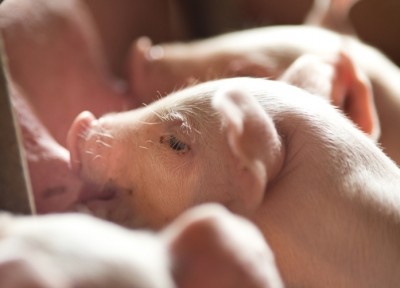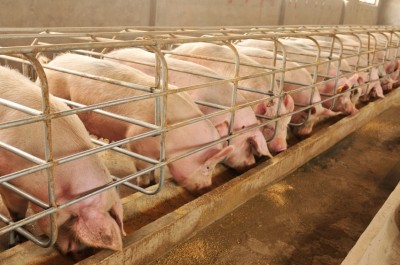EFSA unable to conclude on efficacy of AlzChem additive in breeder hens and piglets

The additive, CreAMINO, is currently authorized under the nutritional additives, functional group 'amino acids, their salts and analogues' for chickens for fattening.
AlzChem, under Article 7(1) of Regulation (EC) No 1831/2003, had requested a widening of the use of the GAA additive for use in feed for pigs and breeding hens and roosters from 24 weeks of age.
The company provided EFSA's Panel on Additives and Products or Substances used in Animal Feed (FEEDAP) with new studies and previously assessed trials on chickens for fattening, one study on breeders of chickens for fattening and one study on piglets to support its application.
Considering the data previously assessed and the two new studies, last month the FEEDAP panel concluded GAA is able to improve performance in chickens for fattening at the minimum dose of 600 mg/kg.
However, that EFSA opinion also noted: "In the absence of adequate data, the FEEDAP Panel cannot conclude on the efficacy of GAA in breeder hens and roosters. In piglets, only one study was available showing that 1,200 mg GAA/kg complete feed improved growth. When the assessment is based on zootechnical parameters, at least three studies are required.”
The panel said it was, therefore, not in a position to conclude on GAA efficacy for piglets on the basis of one study only.
Commission's evaluation awaited
Sabine Sieber, communications spokeswoman for AlzChem, told FeedNavigator:
“Information was supplied showing that GAA improves hatchability in breeder hens at 800 and 1200mg/kg without indications of intolerance. However, EFSA requested more data in this species for their further evaluation.
“GAA was approved safe at a level of 1200 mg/kg in feed for piglets and pigs for fattening.
“And EFSA confirmed this concentration was also efficient in improving piglet growth in the submitted efficacy study.
“The extension of GAA use now awaits a decision by the Commission.”
Dosage levels
But the Panel did revisit its earlier 2009 opinion on the additive in respect of dosage levels. The Parma-based experts agreed that, as a result of the additional information provided, an extension of the maximum content of GAA permitted in complete broiler feed would be safe.
The FEEDAP panel concluded that “1,200 mg GAA/kg complete feed for chickens and pigs for fattening and piglets is safe, provided their diets are sufficiently supplemented with methyl group donors such as choline chloride, vitamin B12 and folic acid.”
The EFSA scientists found that as GAA occurs naturally in the body of animals and humans and acts as a precursor of creatine, the safe level of the product appears to be correlated with the supply of methyl donors.
The full EFSA opinion can be read here.
FEEDAP PANEL ADDITIONAL REMARKS
GAA, said the EFSA scientists, is a metabolic intermediate synthesized from the amino acids glycine and arginine and is subsequently methylated to creatine. Creatine phosphate serves as a dynamic reservoir of high energy phosphate in exchange with adenosyl triphosphate (ATP), it added.
The FEEDAP panel said this compound should not be considered as an amino acid, salt or analogue, although it shows a sparing action on arginine.
GAA, it said, is a precursor of creatine and it is used as a substitute for dietary creatine.
The EFSA experts, therefore, questioned the categorization of GAA in the functional group: amino acids, their salts and analogues.
That category of feed additives “describes substances which finally enter the metabolism of the body as amino acids and as such take part in the protein synthesis pathways. GAA does not play a comparable role,” said the FEEDAP Panel.
Although resulting from the amino acid metabolism, GAA is exclusively converted to creatine and cannot be converted back to an amino acid, said the EFSA experts.
The grouping of GAA under the amino acids functional group is not consistent with the logic behind this functional group, they said. The panel proposed the category could be enlarged by the addition of the term ‘and related substances’ as is the case for the functional group ‘vitamins’.
















